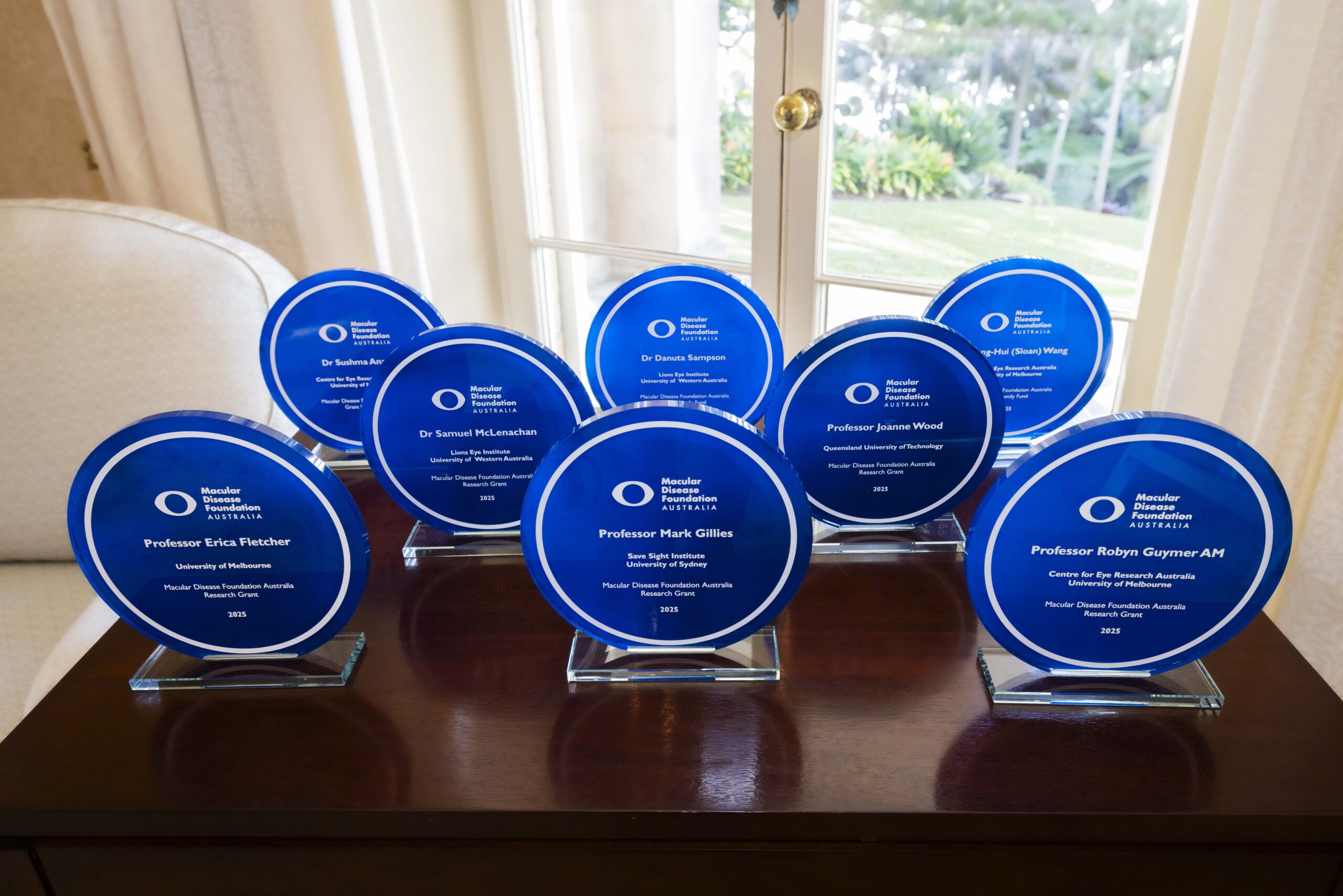New drug will help people maintain sight
The Macular Degeneration Foundation (MDF) calls on the Federal Government to speed the accessibility and affordability of Lucentis.
Dr Paul Beaumont, one of Australia’s leading opthalmologists and a founding member of Macular Degeneration Foundation said Lucentis would help many older Australians maintain their quality of life.
“Lucentis is the penicillin for wet AMD,” he said.
Dr Beaumont
Currently, Lucentis is available only on special authority for $6,000 a year and under control trials. “There are number of authorised prescribers of the drug throughout Australia,” Dr Beaumont said.
“This is one of the greatest developments of ophthalmology and certainly will reduce the amount of blindness in Australia in future years dramatically.”
Dr Beaumont
“Lucentis is intended to treat the underlying cause of wet AMD, the leading cause of blindness in people aged over 50 in the Western world.”
Foundation CEO Julie Heraghty said, “While Lucentis is receiving priority review with the Therapeutic Good Association, Lucentis may not be available for some years to come. In the meantime, Australians should not be investing their own savings on saving their sight, the Federal Government should.”
In February 2006, the Centre for Eye Research Australia released a report including an economic model of the impacts of MD and the current and future costs to Australia. The study revealed that MD costs Australians $2.6 billion a year.
“A new treatment that could reduce the progression rate by only 10 per cent would save a considerable $5.7 billion over the next 20 years,” Ms Heraghty said.
“If you are in danger of losing your sight, which can affect your quality of life and independence, you have a right to access to the most effective treatment.”
“Lucentis, in controlled trials, shows that it maintained or improved vision in 95 per cent of patients with wet age-related macular degeneration (AMD)”, she said.
“Currently Visudyne (verteporfin for injection) is the most widely used therapy for the treatment of wet AMD in Australia, Ms Heraghty said.
Ms Heraghty said recent research undertaken by the Foundation with people who had wet MD, showed that 40 per cent of people did not receive appropriate treatment because it was “too late for treatment”. In 57 per cent of cases the delay was as a result of being unaware of the symptoms or unknowingly linking the symptoms to something else.
“This highlights the need for understanding the symptoms of MD and the urgency in obtaining medical treatment to save sight,” Ms Heraghty said.
About Lucentis
Lucentis (ranibizumab) is a humanised monoclonal antibody fragment designed to bind and inhibit VEGF-A, a protein that is believed to play a critical role in angiogenesis (the formation of new blood vessels). Consequently Lucentis blocks new blood vessel growth and leakiness which leads to wet AMD disease progression and vision loss.
About age-related macular degeneration
AMD is a major cause of painless central visual loss and is a leading cause of blindness for people over the age of 50. It affects over 25 million people worldwide. AMD occurs in two forms: dry and wet. The dry form is associated with atrophy of the central retina or macula, which is required for fine vision used for activities such as reading, driving or recognising faces.
The wet form is caused by growth of abnormal blood vessels also known as choroidal neovascularization (CNV) or ocular angiogenesis under the macula. These vessels leak fluid and blood and cause scar tissue that destroys the macula. These changes result in a deterioration of sight over a period of months to years.
NOTES: Lucentis is not yet registered in Australia and therefore patient expectations are managed in relation to accessing this treatment.
Posted: 6 June 2006
















